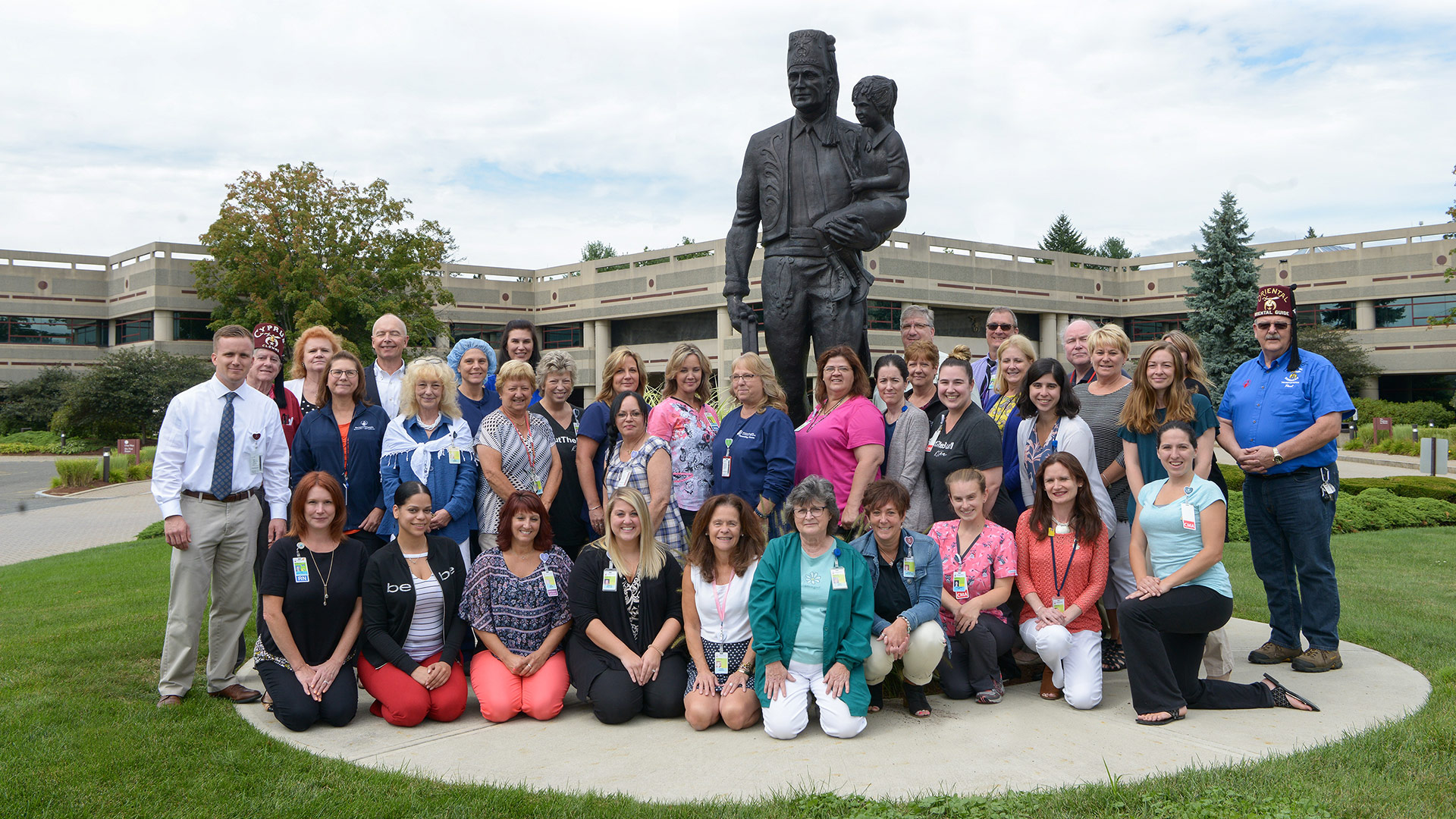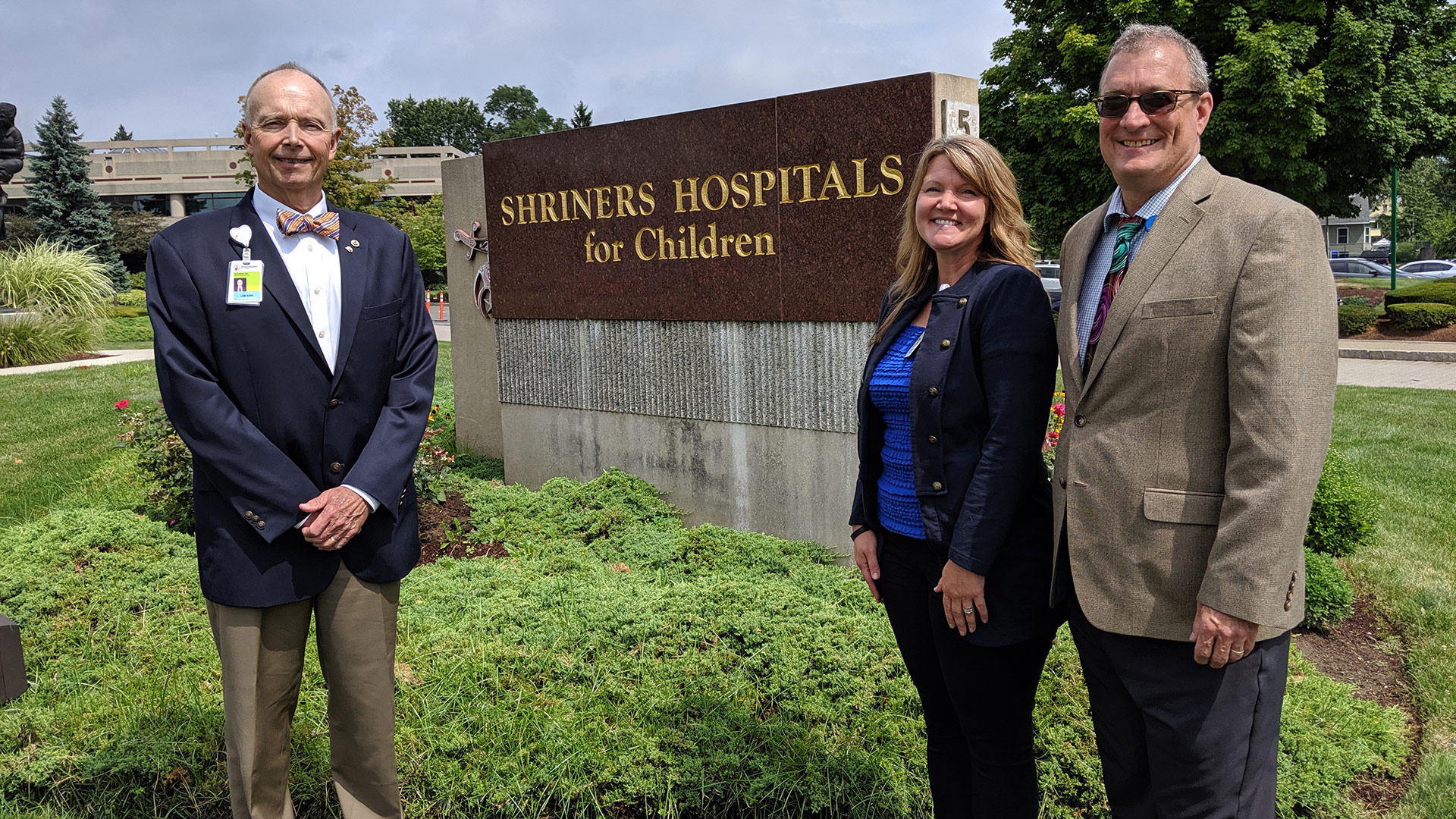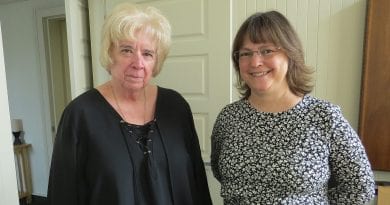Shriners Hospitals for Children – Springfield
‘There’s a Magic Here,’ Built on Dedication, Innovation, and Culture

H. Lee Kirk Jr. was speaking at a public event recently, when a woman stood up to tell him about her 3-year-old grandson’s experience at Shriners Hospitals for Children – Springfield.
“She said, ‘when we take him to the doctor’s office or another healthcare provider, he cries going in, and he’s sprinting out the door to get back home. When he comes to Shriners, he’s sprinting on the way in and happy to be coming, and he’s kicking and screaming when he has to leave,’” he related. “There’s a magic here that’s really hard to get your arms around.”
But Kirk, administrator of the 94-year-old facility on Carew Street in Springfield, tried to explain it the best he could over the course of a conversation with BusinessWest after the hospital was chosen as a Healthcare Hero for 2019 in the Patient/Resident/Client Care Provider category.
“This is a special healthcare organization because of the mission,” he said. “The culture is unlike any other I’ve been involved in. We want to be the best at transforming the lives of kids. And we get the privilege of seeing that every day here.”
It’s a culture that employees find attractive, said George Gorton, the hospital’s director of Research, Planning, and Business Development, adding that consulting physicians from other hospitals say, after visiting, that it’s the happiest place they’ve ever worked.
“It’s a palpable difference,” he went on. “As employees, we love that caring, family feeling of being employed by an organization that aligns with our own personal mission. That’s just not seen anywhere else.”
Last year, the hospital produced some short videos with employees to celebrate the opening of its inpatient pediatric rehab unit. In one of them, a nurse hired specifically for that unit talked about how she’s wanted to be a nurse at Shriners since being treated there for a rheumatology issue when she was a child.
“She was in tears, expressing the joy and positivity she had, to be able to take that experience of receiving care and become the person who provides that care to other people,” Gorton said. “It was a really touching moment to hear her express that.”
Then there’s the boy Gorton — who’s been with Shriners for more than a quarter-century — examined decades ago in the motion-analysis center; he’s now a physician assistant at the hospital.
Gorton said it’s impossible to single out any individual person responsible for creating the generational success stories and culture that makes Shriners what it is. The judges for this year’s Healthcare Heroes program agreed, making a perhaps outside-the-box choice in a category that has previously honored individuals, not entire organizations.
Yet, the choice makes sense, said Jennifer Tross, who came on board two years ago as Marketing and Communications manager, because of that unique culture that draws people back to provide care decades after receiving it, and that has kids shedding tears when they have to leave, not when they show up.
“The day I arrived,” Tross said, “I went home and said, ‘I knew this place would change my life, and it has.’”
Countless families agree, which is why Shriners is deserving of the title Healthcare Hero.
Step by Step
When a boy named Bertram, from Augusta, Maine, made the trek with his family to Springfield in February 1925, he probably wasn’t thinking about making history. But he did just that, as the hospital’s very first patient. The Shriners organization opened its first hospitals primarily to take care of kids with polio, but Bertram had club feet — a condition that became one of the facility’s core services.
After the first Shriners Hospitals for Children site opened in 1922 in Shreveport, La., 10 other facilities followed in 1925 (there are now 22 facilities, all in the U.S. except for Mexico City and Montreal). Four of those hospitals, including one in Boston, focus on acute burn care, while the rest focus primarily on a mix of orthopedics and other types of pediatric care.
As an orthopedic specialty hospital, the Springfield facility has long focused on conditions ranging from scoliosis, cerebral palsy, and spina bifida to club foot, chest-wall deformities, cleft lip and palate, and a host of other conditions afflicting the limbs, joints, bones, and extremities — and much more.
While many of the hospitals overlap in services, each has tended to adapt to the needs of its own community. In Springfield’s case that includes pediatric specialties like rheumatology, urology, and fracture care, as well as a sports health and medicine program that includes three athletic trainers and a pediatric orthopedic surgeon with training in sports medicine.

The latter, Kirk said, includes services to kids without medical problems, as the hospital works with schools, clubs, and leagues help provide more preventive and conditioning services and follow up when injuries occur.
Meanwhile, the BFit exercise program targets kids with neuromuscular problems who normally don’t participate in physical activity, sports, or even gym class. The program aims to improve the physical activity of this group, and does it by involving students from area colleges who are studying fields like physical and occupational therapy, exercise science, sports medicine, and kinesiology.
“They volunteer as personal coaches,” Gorton said. “The child learns to adapt their environment and become physically active, and those students learn what it’s like to care for children. Many have gone into pediatric healthcare to do that kind of training because of their experience here. They see it here, and it spreads like a good virus through the population.”
Then there was the 2013 community assessment determining that an inpatient pediatric rehabilitation clinic would fill a persistent need. That 20-bed clinic opened last year following a $1.25 million capital campaign that wound up raising slightly more — reflective of the community support the hospital has always received, allowing it to provide free care to families without the ability to pay (more on that later).
Still, more than 90% of the care provided in Springfield is outpatient — in fact, the facility saw 12,173 visits last year, a more than 40% expansion over the past several years.
The care itself, the clinical component, is only one of three prongs in the Shriners mission, Kirk said. The second part is education; over the past 30 years, thousands of physicians have undertaken residency education or postgraduate fellowships at the various children’s hospitals. In Springfield, residents in a variety of healthcare disciplines — from orthopedics to nursing, PT, and OT — have arrived for 10- to 12-week rotations.
The third component of the mission is research, specifically clinical research in terms of how to improve the processes of delivering care to children. That often takes the shape of new technology, from computerized 3D modeling for cleft-palate surgery to the hospital’s motion-analysis laboratory, where an array of infrared cameras examine how a child walks and converts that data to a 3D model that gives doctors all they need to know about a child’s progress.
More recently, a capital campaign raised just under $1 million to install the EOS Imaging System, Nobel Prize-winning X-ray technology that exists nowhere else in Western Mass. or the Hartford area, which enhances imaging while reducing the patient’s exposure to radiation. That’s important, Kirk said, particularly for children who have had scoliosis or other orthopedic conditions, and start having X-rays early on their lives and continue them throughout adolescence.
Averting Disaster
It’s an impressive array of services and technology, and collectively, it meets a clear need — and not just locally. While about 60% of patients hail from a 20-mile radius, the hospital sees young people from across New England, New York, more than 20 other states, and more than 20 countries as well.
Yet, only a decade ago, the hospital was in danger of closing. At the height of the Great Recession, the national Shriners organization announced it was considering shuttering six of its 22 children’s hospitals across the country — including the one on Carew Street.
In the end, after a deluge of very vocal outrage and support by families of patients and community leaders, the Shriners board decided against closing any of its specialty children’s hospitals, even though the organization had been struggling, during those tough economic times, to provide its traditionally free care given rising costs and a shrinking endowment.
To make it possible to keep the facilities open, in 2011, Shriners — for the first time in its nearly century-long history — started accepting third-party payments from private insurance and government payers such as Medicaid when possible, although free care is still provided to all patients without the means to pay, and the hospital continues to accommodate families who can’t afford the co-pays and deductibles that are now required by many insurance plans.
“It was a wise decision to accept insurance — but it was a controversial decision,” Kirk said. Yet, it makes sense, too. A very small percentage of patients in Massachusetts don’t have some kind of coverage, yet 63% of care at Shriners is paid for by donors — a disconnect explained by the fact that Medicaid doesn’t pay for care there, and gaps exist in other insurance as well.
So, if a family can’t pay, the hospital does not chase the money, relying on an assistance resource funded by Shriners and their families nationwide.
“Donor support allows us to provide free care,” Kirk said. “We don’t send families to collections and contribute to the number-one cause of personal bankruptcy in America, which is medical care. It’s a very unique model, and a unique healthcare-delivery system.”
And one that, as Kirk noted, treats a patient population that can be underserved otherwise. For instance, the cleft lip and palate program — a multi-disciplinary program integrated with providers from other hospitals in the region and serving about 30 partients at any given time — begins assessing some patients prenatally, and most need care throughout adolescence and even into young adulthood.
Those consulting relationships are critical to the success of Shriners, which doesn’t seek to compete with other providers in the region, but supplement them while striving to be, in many cases, the best place for young people to receive specialized treatment, whether for orthopedic conditions or a host of other issues.
When Kirk arrived in 2015, the hospital underwent a comprehensive self-assessment process that made two things clear, he said: that there’s a real need for what it does, and that it needs to reinvest in its core.
“And that’s what we did. And that’s about people, not bricks and mortar,” he went on, noting that the facility has added about 70 positions since that time.
“We’re a completely different place today than we were in 2009,” Gorton added, noting that the hospital is stronger in leadership, internal communication, and external connections. Among the 22 Shriners specialty hospitals, Springfield ranks second in the proportion of the budget offset by donations. “Why? Because we have a great relationship with the community. We’ve become more outward-facing, and we’re integrated everywhere in the community.”
The Next Century
Getting back to that 3-year-old who doesn’t want to leave when he visits Shriners, surely the hospital’s child-friendly playscapes and colorful, kid-oriented sculptures and artwork help create a welcoming environment, but those wouldn’t make much difference if the people providing care didn’t put him at ease.
That environment begins with employees who love what they do, Kirk said, and this Healthcare Hero award in the Provider category is definitely shared by all of them. Other families feel the same way, as the facility regularly ranks in the 99th percentile on surveys that gauge the patient and family experience.
“We have happy employees who love being here, who love working with kids, who love delivering the mission — and the patients and families sense that and respond to that,” Gorton said.
That’s why the hospital’s leaders continue to examine the evolving needs of the pediatric community and how they can continue to deepen its clinical relationships and expanding services most in demand — always with the philosophy of “mission over model,” Kirk said.
“We are always thinking about the future,” he added, “so we can sustain this healthcare system for the next 100 years.”
Joseph Bednar can be reached at bednar@businesswest.com

